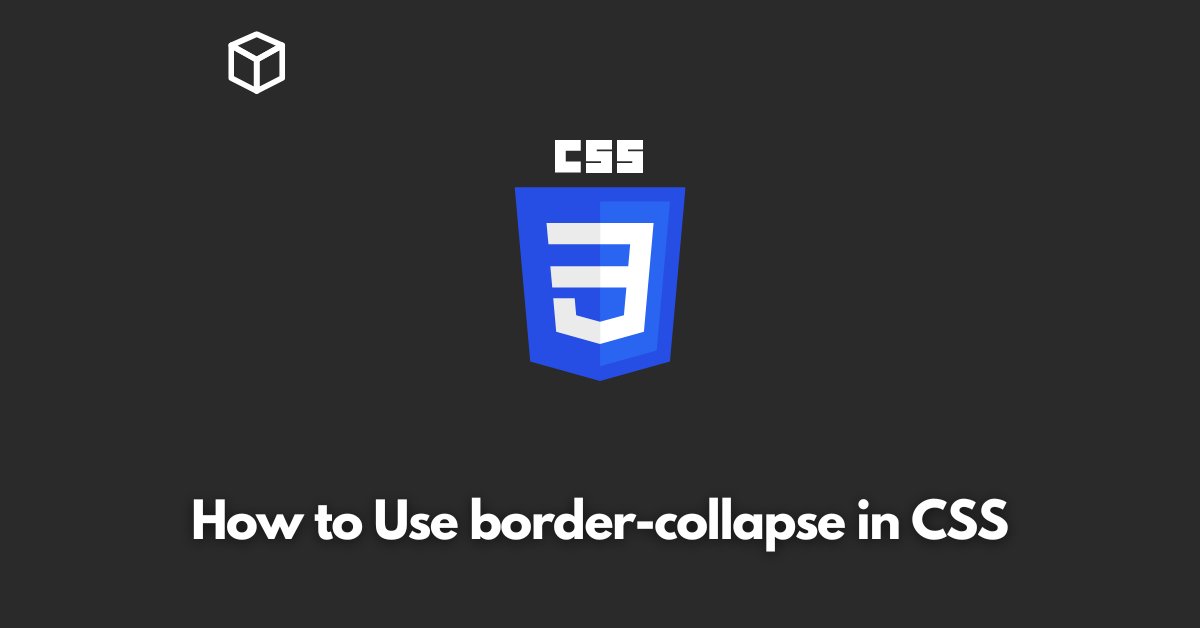Tables are an essential part of web design, and they’re used to display data in a structured way.
As a web developer, it’s crucial to understand how to style tables to make them look professional and easy to read.
One of the most important CSS properties for table styling is border-collapse.
In this CSS tutorial, we’ll discuss what border-collapse is, how it works, and how to use it effectively.
What is border-collapse?
border-collapse is a CSS property that controls the way the borders of a table are displayed.
By default, table borders are separate, meaning that each cell has its own border.
However, with border-collapse, you can collapse the borders of a table, making them appear as a single border.
This can make tables look cleaner and more professional.
There are two values for the border-collapse property: separate and collapse.
When set to separate, the default value, each cell has its own border.
When set to collapse, the borders of the table are collapsed into a single border.
How to Use border-collapse
Using border-collapse is simple. You can apply it to a table element by setting the border-collapse property in CSS.
table {
border-collapse: collapse;
}It’s also possible to apply border-collapse to specific rows or cells within a table by targeting them with CSS selectors.
tr:nth-child(even) {
border-collapse: collapse;
}Using border-collapse with the table element will collapse the outer border of the table, while using it with specific rows or cells will collapse the border of the targeted row or cell.
Combining border-collapse with other CSS properties
border-collapse works well with other CSS properties such as border-spacing and border-color to create more advanced table designs.
table {
border-collapse: collapse;
border-spacing: 0;
border: 2px solid black;
}The above example will create a table with a 2px black border and no space between the cells.
In conclusion, understanding and mastering the border-collapse property is essential for creating professional and polished table designs.
It’s a simple but powerful tool that can make a big difference in the appearance of your tables.
With a little practice and experimentation, you’ll be able to create tables that are both functional and visually appealing.




